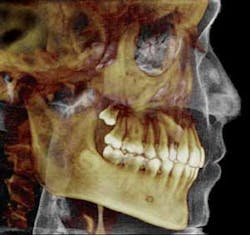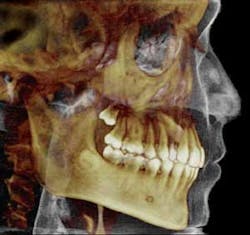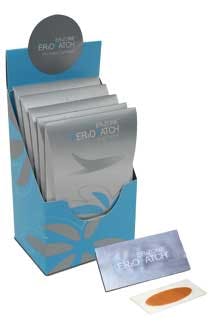News you can use: Safe use of cone-beam CT; a topical gingival patch containing natural extracts
The American Dental Association (ADA) Council on Scientific Affairs (CSA) released recommendations for the safe use of cone-beam CT in a dental practice.(1,2,3) The CSA promotes safe use of conebeam computed tomography (CBCT) and appropriate professional justification of CBCT imaging procedures.
The researchers used a commercially available topical patch (PerioPatch) that contains extracts of three herbs: Centella asiatica; Echinacea purpurea; and Sambucus nigrad, that have all been shown to be both safe and effective in reducing gingival inflammation.(2,3,4,5)
These herbs, in combination with other formulatory agents in the patch, absorb inflammatory fluids and surface exudates from inflamed tissue as well. The patch is a registered medical device and was developed to help reduce localized irritation and inflamed gingiva.(6)
A small study following a series of 20 healthy patients, who presented with moderate-to-severe chronic periodontitis (probing depths, 5 to 8 mm), were treated with the patch immediately after treatment with SRP. All patients had bilateral gingival inflammation with a gingival index (GI) ≥ 2 and bleeding on probing (BOP) on ≥ 1site per tooth on two adjacent teeth.
After SRP, the patch was applied first by the study periodontist (AS), with two subsequent applications over the next 24 hours by the patient, and reevaluated two (2) to four (4) weeks later. On a separate visit, the contra lateral side was treated with SRP alone and was also reassessed after two (2) to four (4) weeks. Both the patch and non-patch sides showed improvement after SRP. When comparing the two sides, the patch-treated area showed a significantly greater reduction of inflammation and bleeding, as measured by GI (P <0.001) and BOP (P <0.002).
The conclusions of the study was, in this case series, that the patch was shown to provide a beneficial effect by helping to further reduce inflammation when used in conjunction with scaling and root planing. Additional research of the patch combined with SRP treatment is warranted within the framework of large randomized and controlled trials.
Visit the PerioPatch website to see a video of how the product works.(7)
References
1. Saffer A and Samuels N. A Novel Adjuvant Treatment to Scaling and Root Planing With a Topical. Gingival Patch: A Case Series. Clin Adv Periodontics 2012;2:123-127.
2. Sastravaha G, Yotnuengnit P, Booncong P, Sangtherapitikul P. Adjunctive periodontal treatment with Centella asiatica and Punica granatum extracts. A preliminary study. J Int Acad Periodontol 2003;5:106-115.
3. Sastravaha G, Gassmann G, Sangtherapitikul P, Grimm WD. Adjunctive periodontal treatment with Centella asiatica and Punica granatum extracts in supportive periodontal therapy. J Int Acad Periodontol 2005;7:70-79.
4 . Gasiorowska I, Patalas B, Wiktorowska B. Echinacin externa use in the treatment of periodontopathies (in Polish). Czas Stomatol 1981;34: 677-679.
5. Harokopakis E, Albzreh MH, Haase EM, Scannapieco FA, Hajishengallis G. Inhibition of proinflammatory activities of major periodontal pathogens by aqueous extracts from elder flower (Sambucus nigra). J Periodontol 2006;77:271-279.
6. PerioPatch, Izun Pharmaceuticals, New York, NY. http://www.perizoneonline.com/tag/periopatch.
7. http://www.perizoneonline.com/periopatch-how-it-works.
Maria Perno Goldie, RDH, MS
To read previous RDH eVillage FOCUS articles by Maria Perno Goldie, go to articles.






